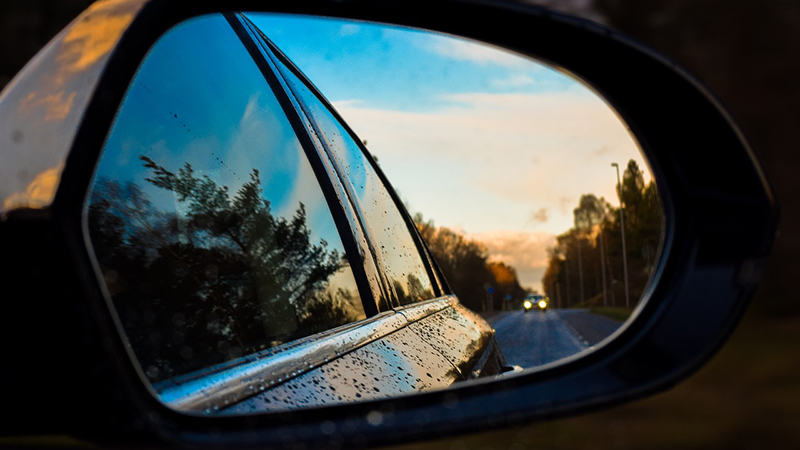Lights flash behind you and a ‘police car’ is signalling for you to pull over – but how can you tell if it’s a bona-fide officer or one of an increasing number of ‘phantom cops’ haunting the UK’s streets?

Is that car flashing you a genuine cop or a fake? Here’s what to do if you’re unsure
Motorists have reported cases of fake undercover cop cars attempting to stop them across the country, with some incidents involving lone women targeted on remote roads – as reported in the Mirror.co.uk.
From rural roads to motorways, nowhere has escaped these sinister fraudsters, so how can you spot the signs of a ‘fake’ police car and what should you do if you’re unsure who’s in your rear-view mirror? Here’s our guide to staying safe on the roads.
It’s likely that crooks will pose as cops driving an undercover vehicle – securing of a fully liveried patrol car is expensive and would make them easier to spot by genuine officers.
Yes. ‘Stops’ do not have to be carried out by a marked police car. However, at least one of the policeman in the vehicle must be wearing uniform. If not, then you could be the victim of a fake ‘cop’ and should only stop in a populated location, which we’ll discuss further here.
If a car is flashing you with headlamps, then be wary as genuine patrols will always turn on their blue lights when stopping a motorist. You are under no obligation to pull over simply because another driver flashes you with headlights – the Highway Code backs up this. If the motorist persists, drive on cautiously and at a reduced speed, but do not stop until in a safe, populated location with others around. Ensure your doors are locked and your mobile phone is in reach if safe to do so.
However, purchasing a portable blue-light beacon is easy and inexpensive, so don’t be fooled into thinking flashing lights in the rear-view mirror is reason alone to stop. Some drivers have even used video playing on a phone or tablet screen to mimic a genuine flashing blue light using innocent footage such as this (warning contains flashing light). Genuine police-vehicle lights will be of high-quality and powerful. A manual rotating light should be a warning sign, as real units are likely to be of a strobe type.
No. Police can stop any vehicle and ask to see the driver’s documents. If the driver hasn’t got them to hand, they will be allowed to present them at a police station within a certain amount of time.
The advice from many police forces is simply don’t stop if you’re genuinely concerned! You should not attempt to speed off and outrun the suspect vehicle – it still could be genuine – instead indicate you have seen the car, consider turning your hazard lights on and drive at a reduced, steady pace until you can find a safe place to stop. Genuine officers will recognise what is going on and follow at an equally safe pace and distance.
Yes. Despite tough new mobile phone laws coming into force for drivers, official advice from the Government states the following with respect to using a handheld phone while driving:
‘You can use a hand-held phone if you need to call 999 or 112 in an emergency and it’s unsafe or impractical to stop.’
If you feel genuinely at risk, using your phone to call 999 or 112 is likely to be a successful defence even if it is a genuine police car following you. Trying to use this defence fraudulently, however, is likely have serious implications.
Yes, if you are genuinely worried then calling 999 and asking for the police is advisable. You will not be looked upon as a time waster and the report will be taken seriously. Explain the situation and let the operator know where you are and don’t hang-up unless advised to do so. The police should be able to rapidly confirm if it’s a valid vehicle and act accordingly if it isn’t. The call handler will also be able to advise on a course of action.
Carry on driving at a safe, slow pace with your hazard lights on. Look out for a well-lit location to stop where there are plenty of other people. Areas such as petrol stations are ideal as these are typically covered by extensive CCTV. Any crook will be well aware of this and carry on driving.
If you do stop in this situation and the car turns out to be a genuine police vehicle, politely explain why you did not stop immediately.
Remain in the car, lock the doors and do not fully open the window. Ask to see the ‘officer’s’ identification before even considering opening the car. If the location is unsafe, do not stop. A genuine officer would not risk the safety of you, your car’s occupants or other road users.
Be polite when speaking to the ‘officer’ and only open the door and get out if entirely convinced that he or she is legitimate.
Please share with friends
Remember, these cases are rare, but being prepared will put you in a far better position to deal with the situation. Please share with friends who often drive alone. You cab use the ‘share’ buttons below for Facebook and Twitter.
